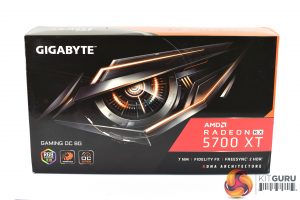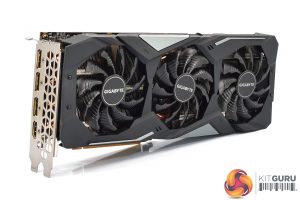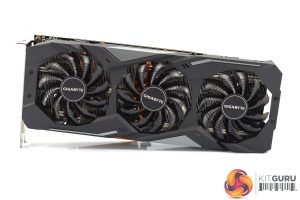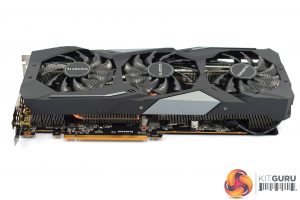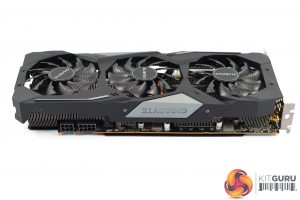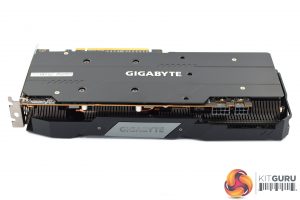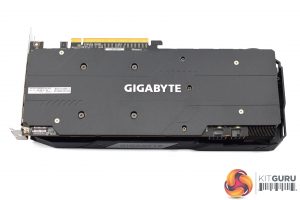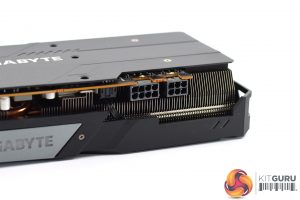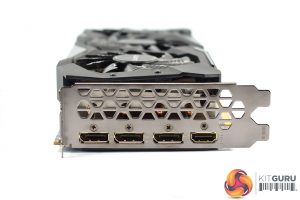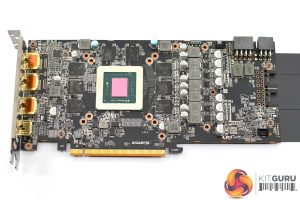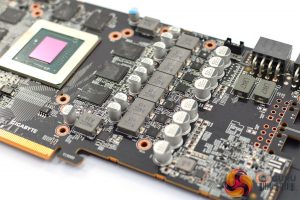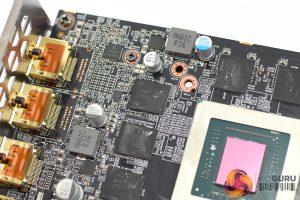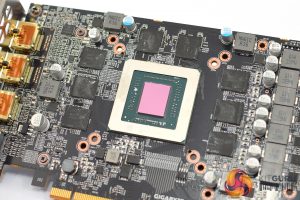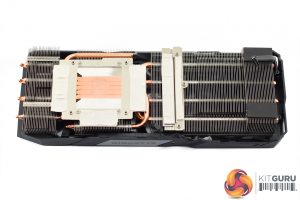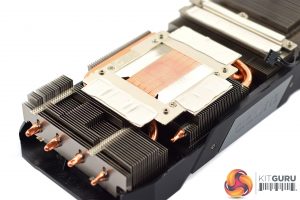The Gigabyte RX 5700 XT Gaming OC ships in a black box, with Gigabyte's large robotic eye logo dominating the front. Inside, the only included accessory is a small quick start guide.
The card itself will be instantly familiar to many of our readers – it is the same design as the RX 5600 XT Gaming OC we reviewed last month, which means it is also the same design as several other Nvidia-based graphics cards we have seen from Gigabyte over the last 18 months.
The shroud consists of mostly matte black plastic, but it does also have some grey accents as well. It's overall a very colour-neutral design, though arguably it is also a bit plain. The three fans form part of the Windforce 3X cooler, each measures 80mm and you will note the central fan spins in reverse relative to the outer two. Gigabyte calls this ‘alternate spinning' technology which should reduce turbulence and increase airflow pressure.
In terms of the size of the card, it's not a monster by modern standards, but it's not small either. Official dimensions come in at 279.85 x 114.35 x 49.55 mm, so you will need three expansions slots free.
The front side of the card is again quite plain, with a small Gigabyte logo which acts as the card's sole RGB zone. Similarly, while there is a full-length metal backplate, aside from the Gigabyte logo printed in white, it has been left relatively bare.
Power requirements consist of 1x 8-pin and 1x 6-pin connectors, while we get 3x DisplayPort and 1x HDMI video outputs.
In terms of the PCB, the Gaming OC is pretty straightforward with a 7-phase VRM for the GPU and a 2-phase VRM for the memory. Memory is supplied by Micron in the form of its ‘D9WCW' 14Gbps modules, while we can also see the Navi 10 GPU measuring 251mm².
The cooler is again familiar, being the same design as the RX 5600 XT Gaming OC. This means it uses three fin stacks, with a total of 5 copper heatpipes – each pipe measures 6mm. These pipes also make direct contact with the GPU die, but there are separate coldplates for the memory and the VRM.
 KitGuru KitGuru.net – Tech News | Hardware News | Hardware Reviews | IOS | Mobile | Gaming | Graphics Cards
KitGuru KitGuru.net – Tech News | Hardware News | Hardware Reviews | IOS | Mobile | Gaming | Graphics Cards


